Have you ever experienced the frustration of getting your cat’s claws trimmed, only for it to have grown back in a matter of days? If so, then chances are that your kitty has been suffering from darkening under their nails.
This condition is relatively common among cats, but what does it mean and how can you best respond if your feline friend is affected?
Don’t worry – we’re here to help! In this blog post, we’ll be discussing the causes and best treatments for darkening underneath cat claws, as well as ways that owners can ensure they take proper care of their furry friends’ activities and nail care. Read on to learn more!
Why Is My Cat’s Claw Darkening Under?
The most common cause of darkening underneath cat claws is a condition known as claw dystrophy. This occurs when the nail bed becomes damaged, causing the nail to thicken and grow out with a darker color.

Hyperkeratosis
Hyperkeratosis is another condition that can cause the claws to darken underneath. It occurs when there’s an excess of keratin, a protein found in nails, on the nail bed. This causes the nail to thicken and become darker than usual.
Pemphigus
Pemphigus is an immune-mediated skin condition that can affect cats. It occurs when the body’s own antibodies target and attack healthy cells, resulting in lesions on the skin, including around the claws. This causes them to darken underneath as a result of inflammation. [1]
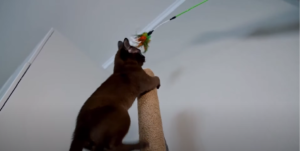
Fungal or bacterial infections
Sometimes, darkening underneath cat claws can be caused by a fungal or bacterial infection. These infections can cause the nail bed to become inflamed and irritated, resulting in the darkening of the nails.
Genetics
Genetics can also play a role in darkening underneath cat claws. Some cats may be predisposed to developing dark nails due to their breed or other hereditary factors.
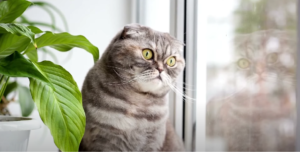
Injury or trauma
Injury or trauma to the nail bed can also cause a cat’s claws to darken underneath.
Poor diet
A poor diet can also contribute to darkening underneath cat claws. A lack of essential vitamins and minerals in your cat’s diet can lead to unhealthy nails that are more prone to discoloration.
Aging
Finally, ageing can be a factor in darkening underneath cat claws. As cats age, their nails naturally grow thicker and darker.
What Colour Should My Under Cats Claws Be?
Generally, cats’ claws should have a light pinkish color. If you notice that your cat’s nails are darker than usual, it could be an indication of one of the causes mentioned above and they should be checked by a veterinarian.
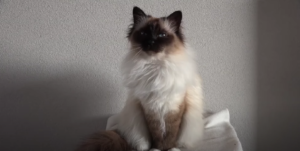
How Do You Tell If Your Cat’s Nails Are Infected?
Sometimes, darkening underneath cat claws can be caused by an infection. If you suspect that your cat’s nails are infected, look out for the following symptoms:
- Redness or swelling of the nail bed
- Discharge from the claw area
- Bad odour coming from the claw area
- Paw licking or other signs of discomfort
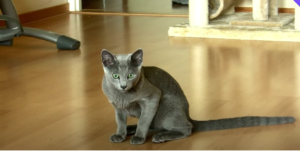
If you notice any of these symptoms, take your cat to the vet as soon as possible for a check-up.
Why Does My Cat Have Brown Stuff On His Claws?
If you suspect that your cat has hyperkeratosis, take them to the vet for an exam and treatment.
How Can You Treat Darkening Under Cat Claws?
The best way to treat darkening under cat claws is to identify and address the underlying cause. If the discoloration is caused by claw dystrophy, your vet may recommend trimming the nails and providing supplements to support nail health.
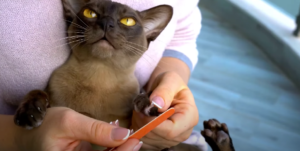
For other causes such as hyperkeratosis or pemphigus, the vet will likely prescribe medication or topical creams to treat the condition. If a fungal or bacterial infection is present, antibiotics may be prescribed. [2]
FAQ
What is the black stuff under my cat’s claws?
The black stuff under your cat’s claws may be due to a number of causes, such as hyperkeratosis, an infection, or claw dystrophy. If you suspect any of these conditions, take your cat to the vet for an exam and treatment.
Should I trim my cat’s nails if they are darkening?
It depends on the cause. If claw dystrophy is to blame, trimming the nails may be helpful in promoting healthy nail growth and reducing discoloration.
However, if an infection or other condition is present, your vet will likely advise against trimming the nails until it has been treated.
What can I do to prevent darkening underneath cat claws?
There are several steps you can take to reduce the risk of darkening underneath cat claws. Make sure your cat is fed a balanced diet with plenty of essential vitamins and minerals, provide comfortable surfaces for them to walk on (such as carpet or fleece mats), and monitor their nails regularly for any signs of discoloration.
Additionally, if you notice your cat limping or licking their paws frequently, take them to the vet for an examination.
How do you treat fungus on a cat’s claw?
Fungal infections on a cat’s claw can be treated with topical antifungal creams or oral medications prescribed by your vet. It is important to follow the instructions provided and continue treatment until the infection has cleared up completely.
Additionally, making sure that your cat’s nail bed is kept dry can help prevent fungal infections in the future.
Why are my cat’s claws discoloured?
Discoloration of your cat’s claws can be caused by a number of different factors, including claw dystrophy, hyperkeratosis, fungal or bacterial infections, trauma, and pemphigus. If you notice discoloration on your cat’s claws, take them to the vet for an exam and diagnosis.
How do you treat an infected cat’s claw at home?
Treating an infected cat’s claw at home is not recommended. It is important to take your cat to the vet for a diagnosis and treatment plan.
Your vet will be able to prescribe appropriate medications or topical creams, as well as provide guidance on how to care for your pet’s nails at home.
How do you tell if a cat’s claw is infected?
Signs of an infected cat’s claw include redness, swelling, pus or discharge, a bad odour, and limping. If you notice any of these symptoms, take your cat to the vet for an examination and treatment.
What does a cat nail infection look like?
A cat nail infection can cause discoloration, redness, swelling, and pus or discharge. The nails may also become brittle or cracked. If you notice any of these symptoms in your cat’s nails, take them to the vet for an exam and treatment.
What can I do to make my cat’s claws less likely to darken?
There are several steps you can take to reduce the risk of darkening underneath cat claws. Make sure your cat is fed a balanced diet with plenty of essential vitamins and minerals, provide comfortable surfaces for them to walk on (such as carpet or fleece mats), and monitor their nails regularly for any signs of discoloration.
Additionally, if you notice your cat limping or licking their paws frequently, take them to the vet for an examination. Maintaining proper nail hygiene and trimming your cat’s claws regularly can also help reduce the risk of darkening underneath the claws.
What if my cat’s claws are too dark to trim?
If your cat’s claws are too dark to trim, it is important to take them to the vet for a diagnosis. The vet may need to perform additional tests or prescribe medication in order to identify and treat the underlying cause of the discoloration.
Once the condition has been addressed, you will be able to trim your cat’s claws more safely.
What type of nail clippers should I use to trim my cat’s claws?
It is important to use the correct tools when trimming your cat’s claws. We recommend using a pair of pet-safe nail clippers specifically designed for cats.
Additionally, it is important to be gentle and avoid cutting too much off of each claw as this can cause the nail to bleed. If you are unsure about how to trim your cat’s claws, talk to your vet for advice.
What can I do if my cat’s claws keep darkening?
If your cat’s claws continue to darken despite taking preventive measures and proper care, it is important to take them to the vet for an examination. Your vet may need to perform additional tests or prescribe medication in order to identify and treat the underlying cause of the discoloration.
Once the condition has been addressed, you will be able to trim your cat’s claws more safely.
What else can I do to protect my cat’s claws?
In addition to taking preventive measures and proper care of your cat’s claws, you may also want to consider giving them regular paw massages or applying a protective balm. This can help keep their nails healthy and reduce the risk of discoloration.
Additionally, making sure that your cat’s environment is not too dry or humid can also help protect their nails from darkening. Finally, be sure to keep an eye out for signs of infection and take your cat to the vet if you notice any unusual discoloration or other symptoms.
What is the best way to care for a cat with darkening claws?
The best way to care for a cat with darkening claws is to take them to the vet for an examination and diagnosis. Your vet may need to perform additional tests or prescribe medication in order to identify and treat the underlying cause of the discoloration.
Once the condition has been addressed, you will be able to trim your cat’s claws more safely. Additionally, making sure that your cat is fed a balanced diet with plenty of essential vitamins and minerals and providing comfortable surfaces for them to walk on can also help protect their nails from darkening.
What should I do if my cat’s claws are discoloured after trimming?
If your cat’s claws appear to be discoloured after trimming, take them to the vet for an examination. Your vet may need to perform additional tests or prescribe medication in order to identify and treat the underlying cause of the discoloration.
Additionally, make sure to use the correct tools when trimming your cat’s claws (such as pet-safe nail clippers specifically designed for cats) and be gentle to avoid cutting too much off of each claw. This can help reduce the risk of discoloration after trimming.
How often should I trim my cat’s claws?
The frequency of trimming your cat’s claws will depend on the individual needs of your pet. Generally, it is recommended to trim the nails every few weeks or so.
However, if your cat spends a lot of time outside or has long claws, you may need to trim them more frequently. We recommend talking to your vet for advice on how often you should trim your cat’s claws.
How can I prevent darkening of my cat’s claws?
There are several ways to help prevent the darkening of your cat’s claws. First, be sure to use the correct tools when trimming their nails (such as pet-safe nail clippers specifically designed for cats) and be gentle to avoid cutting too much off of each claw.
Additionally, making sure that your cat is fed a balanced diet with plenty of essential vitamins and minerals can help keep their nails healthy. Finally, providing comfortable surfaces for them to walk on such as carpeted or padded scratching posts or mats can also help protect their nails from darkening.
How can I tell if my cat’s claws are too long?
If your cat’s claws get to the point where they curl over or stick out past their paw pads, then they are likely too long. Additionally, if you notice that your cat is struggling to walk or having difficulty scratching, this may also be a sign that their nails are too long.
How can I tell if my cat’s claws are infected?
If your cat’s nails appear to be discoloured, swollen, or painful, they may have an infection. Additionally, if you notice signs of discharge or a strong odour coming from their paws, this could also indicate an infection.
If you notice any of these symptoms, then it is important to take your cat to the vet as soon as possible. Your vet may need to perform additional tests or prescribe medication in order to identify and treat the underlying cause of the infection.
How can I tell if my cat is in pain due to their claws?
If your cat is limping, avoiding walking on certain surfaces, or appears to be uncomfortable when you touch their paws, these could all be signs that they are in pain due to their claws.
Additionally, if you notice your cat licking or biting at their feet more than usual, this could also be an indication that something is wrong. If you suspect that your cat may be in pain due to their claws, it is important to take them to the vet for an examination.
The vet may need to perform additional tests or prescribe medication in order to identify and treat the underlying cause of any pain or discomfort.
How do I know if my cat needs professional nail trimming?
If your cat’s claws are too long and you are having difficulty trimming them yourself, then it may be time to take them to a professional for nail trimming.
Additionally, if your cat is struggling with mobility or has an infection that requires more specialised care, then it is best to seek the help of a professional.
Your vet can provide recommendations for reputable cat groomers in your area who are experienced with trimming cat nails. Finally, it is important to remember that cats (like all animals) need regular grooming and nail care.
How do I know when to stop trimming my cat’s claws?
It is important to not go overboard when trimming your cat’s nails. As a general rule, you should only remove the sharp tip of each nail and avoid cutting into the quick (the pink area in the middle).
If you notice any blood or signs of pain from your cat, then it is best to stop immediately and seek advice from your vet. Additionally, it is important to remember that cats need their claws for balance and mobility, so be sure not to trim them too short.
How can I keep my cat’s claws healthy?
In addition to regular nail trimming, there are several other steps you can take to ensure that your cat’s claws remain healthy.
Making sure they have plenty of scratching posts or mats available in your home can help them keep their nails filed down naturally.
Additionally, providing safe surfaces for them to walk on (such as carpeted or padded scratching posts or mats) can also help protect their nails from darkening.
Why should I give my cat regular claw maintenance?
Regular claw maintenance is important for your cat’s health and wellbeing. Keeping their nails trimmed can help prevent painful ingrown claws or infections, as well as reduce the risk of them injuring themselves or becoming stuck on fabrics or furniture.
Additionally, providing a variety of surfaces for your cat to scratch on can also help keep their nails filed down naturally and prevent them from darkening. Finally, regular claw maintenance is also beneficial for your furniture and other surfaces in your home that may be susceptible to damage caused by a cat’s claws.
Does my cat need any special care in the winter?
During the colder months, it is important to make sure that your cat’s paws are kept warm and dry. This means providing a soft and comfortable bed or blanket for them to sleep on as well as making sure they are not exposed to snow or icy surfaces.
Additionally, using a paw balm or wax can help protect their paws from drying out or becoming cracked and sore. Finally, providing plenty of scratching posts and toys can also help keep their nails filed down naturally and prevent them from darkening during the winter months.
Does my cat need any special care in the summer?
In addition to protecting your cat’s paws from drying out in the winter, it is also important to protect their nails from darkening during the summer. Regular nail trimming can help prevent this and provide a polished look for your cat’s claws.
Additionally, providing plenty of scratching posts and toys can also help keep their nails filed down naturally and prevent them from darkening in the summer months.
Finally, it is important to make sure that your cat has plenty of cool and shady places available in your home during the hot summer months.
Do cats need to have regular claw maintenance?
Yes, cats need regular nail trimming and other forms of claw maintenance in order to remain healthy. Keeping their nails short can help prevent painful ingrown claws or infections, as well as reduce the risk of them injuring themselves or becoming stuck on fabrics or furniture. Additionally, providing a variety of surfaces for your cat to scratch on can also help keep their nails filed down naturally and prevent them from darkening.
Finally, regular claw maintenance is also beneficial for your furniture and other surfaces in your home that may be susceptible to damage caused by a cat’s claws.
Does my cat need to go to the vet for nail trimming?
No, you can trim your cat’s nails at home if you know how to do it safely. However, it is important to remember that cats have delicate claws and skin, so be sure to take extra care when trimming them (especially around the base of their claws or in between their toes).
It is also recommended to seek veterinary advice if you are unsure about how to trim your cat’s claws or if they have an infection or injury that requires professional attention.
Useful Video: How to Cut a Cat’s Nails? 🐱 STEP-BY-STEP Guide
Conclusion
We hope that this blog post has provided you with useful insight on how to prevent and treat darkening under your cat’s claw. While the best advice is to always be on the lookout for any new changes in your pet, taking proactive steps such as following a balanced diet for your cat, regular exercise and clipping nails regularly are also key elements to keep in mind.
If faith does not succeed, take him or her to the vet immediately. Prevention is always better than cure – and it’s all the more important when it comes to our furry friends. Gently brushing your cat’s claws weekly can also help keep them healthy, so give them some extra love by having a special time of grooming together every week!
Finally, remember that each cat individual needs special care and attention – as we think they all deserve – so take note of any darkening areas and inform a veterinarian if necessary.
References:
- https://pet-how.com/why-is-my-cats-claw-darkening-under-here-is-what-to-do/
- https://kittydevotees.com/2022/08/06/darkening-under-cat-claw-a-quick-guide-for-new-cat-owners/





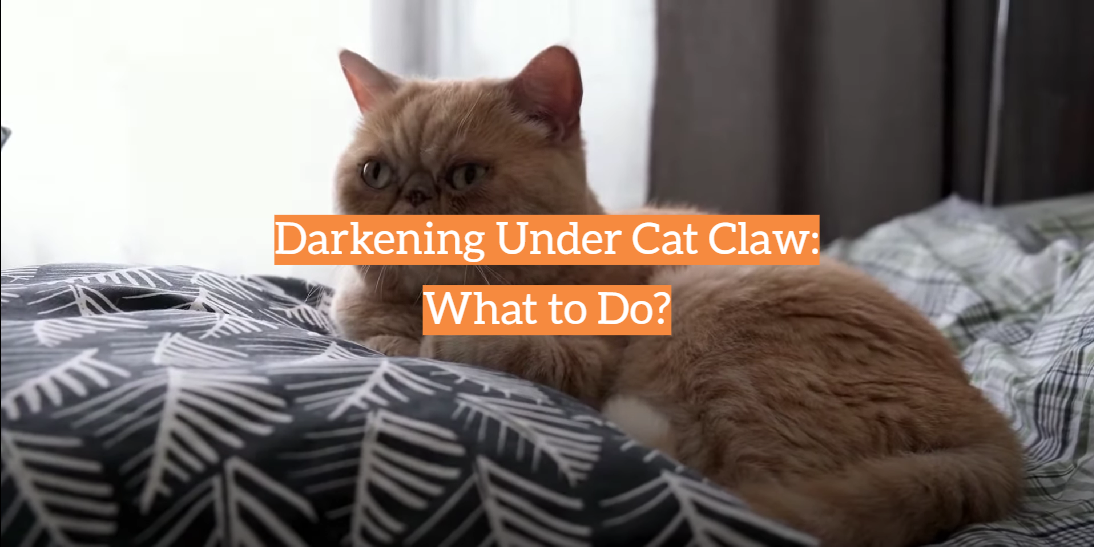
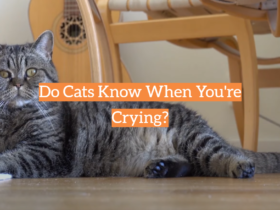


Discovering darkening under my cat’s claws prompted concern and a trip to the veterinarian. The vet explained that darkening, especially if it’s gradual and not accompanied by other symptoms, could be a sign of age-related changes or simply a pigment variation. However, sudden darkening or coupled with limping might indicate an injury or infection. In my case, it turned out to be benign, but the experience highlighted the importance of regular veterinary check-ups for a comprehensive understanding of my cat’s health.
Darkening under my cat’s claws triggered a bit of panic until I consulted with my veterinarian. They assured me that various factors, including age, genetics, and even exposure to certain substances, could contribute to pigmentation changes. However, they emphasized the need to monitor for any signs of discomfort, limping, or swelling, as these could indicate an underlying issue. Regular nail trims and a careful examination of the affected paw became part of our routine to ensure my cat’s ongoing paw health.
Observing darkening under my cat’s claws led me to inspect their environment. Sometimes, cats may develop pigment changes due to contact with certain materials or substances. In my case, it turned out that a new carpet cleaner we were using caused the darkening. Changing the cleaner and ensuring a cat-friendly environment alleviated the issue. This experience highlighted the need to be mindful of potential environmental factors that could impact my cat’s well-being.
The sight of darkening under my cat’s claws prompted me to scrutinize their behavior. After ruling out potential health issues with the veterinarian, I realized it might be related to their scratching habits. Introducing a variety of scratching posts with different textures helped alleviate the darkening, emphasizing the importance of providing appropriate outlets for natural feline behaviors to maintain their paw health.
Witnessing darkening under my cat’s claws prompted me to explore dietary factors. Sometimes, nutritional imbalances can affect a cat’s coat and skin. Consulting with the vet and adjusting my cat’s diet with their guidance proved beneficial. This experience underscored the interconnectedness of a cat’s overall health and the importance of a well-balanced diet in addressing potential pigment changes under the claws.
Coming across darkening under my cat’s claws spurred me to investigate their grooming routine. Cats are meticulous groomers, but sometimes, debris or dirt can accumulate in the claw area, causing discoloration. A gentle cleaning routine became part of our bonding time, ensuring not only paw cleanliness but also addressing any potential issues that might arise from neglecting this aspect of their grooming.
The discovery of darkening under my cat’s claws prompted me to consider their overall paw comfort. I realized that the darkening coincided with a change in weather, leading me to think about potential dryness or irritation. Incorporating a pet-safe paw balm into my cat’s care routine provided relief and hydration, highlighting the importance of seasonal adjustments in maintaining their paw health.
Darkening under my cat’s claws raised questions about their scratching habits and the condition of their scratching posts. Cats may inadvertently pick up dyes or substances from worn-out posts. Upgrading to new, cat-friendly scratching posts not only eliminated the darkening issue but also encouraged healthy scratching behavior. This experience emphasized the significance of regularly inspecting and updating their environmental enrichment items.
Observing darkening under my cat’s claws prompted me to explore the possibility of ingrown nails. Cats, especially those with longer nails, can sometimes develop ingrown nails, leading to discomfort and discoloration. A gentle examination revealed the issue, and a visit to the vet for proper trimming and care resolved the darkening. It reinforced the importance of maintaining proper nail length to prevent potential paw problems.
The sight of darkening under my cat’s claws prompted me to reassess their litter choices. Some cats may develop pigment changes due to exposure to certain substances in their litter. Switching to a hypoallergenic and fragrance-free litter eliminated the darkening, emphasizing the impact of seemingly small changes in the environment on a cat’s overall well-being. This experience underscored the need for attentiveness to every aspect of a cat’s surroundings for optimal health.
Noticing darkening under my cat’s claws led me to evaluate their outdoor adventures. Cats may encounter various substances outside that can impact the coloration of their claws. In my case, it turned out my cat was digging in a particular type of soil. While harmless, the darkening prompted me to create a designated digging area, ensuring a safe and stain-free environment for their paw activities.
Darkening under my cat’s claws prompted me to inspect for any signs of pests. Fleas or mites can cause discomfort and discoloration. Fortunately, a visit to the vet ruled out any infestations, and preventive measures kept my cat pest-free. This experience emphasized the importance of routine parasite control to maintain not just overall health but also the condition of their claws.